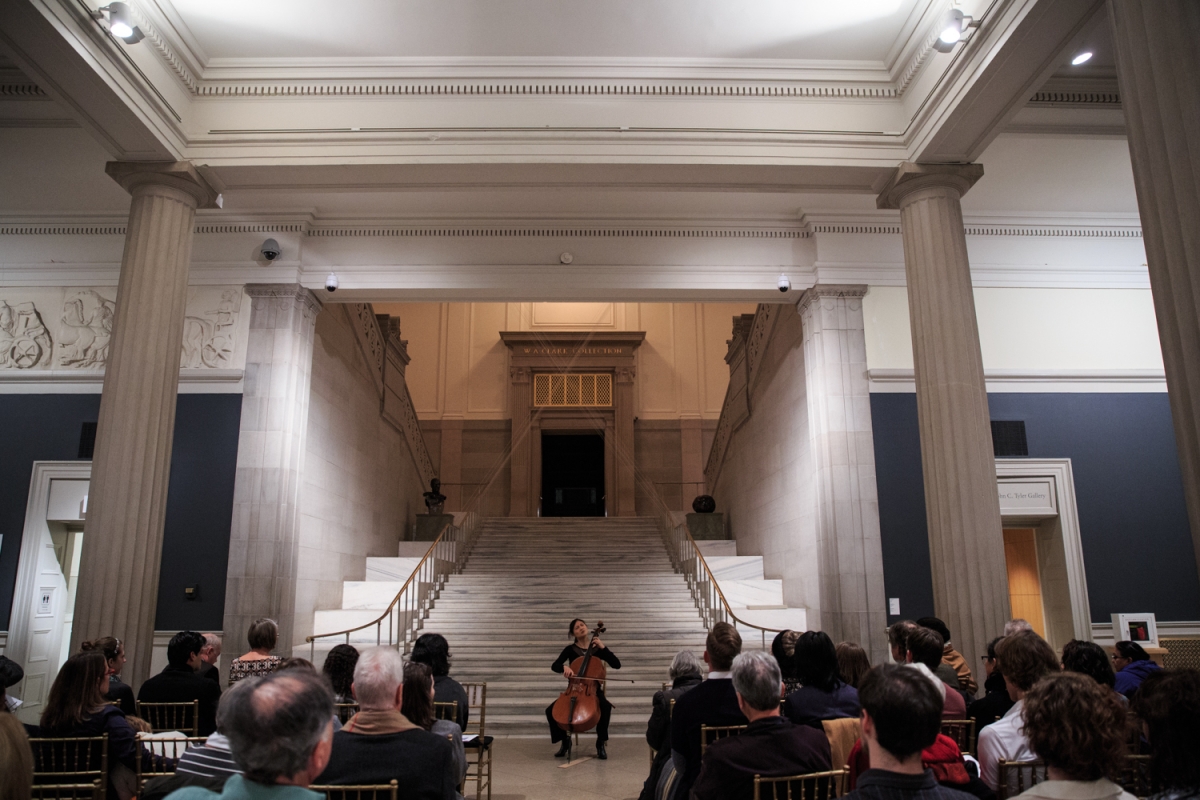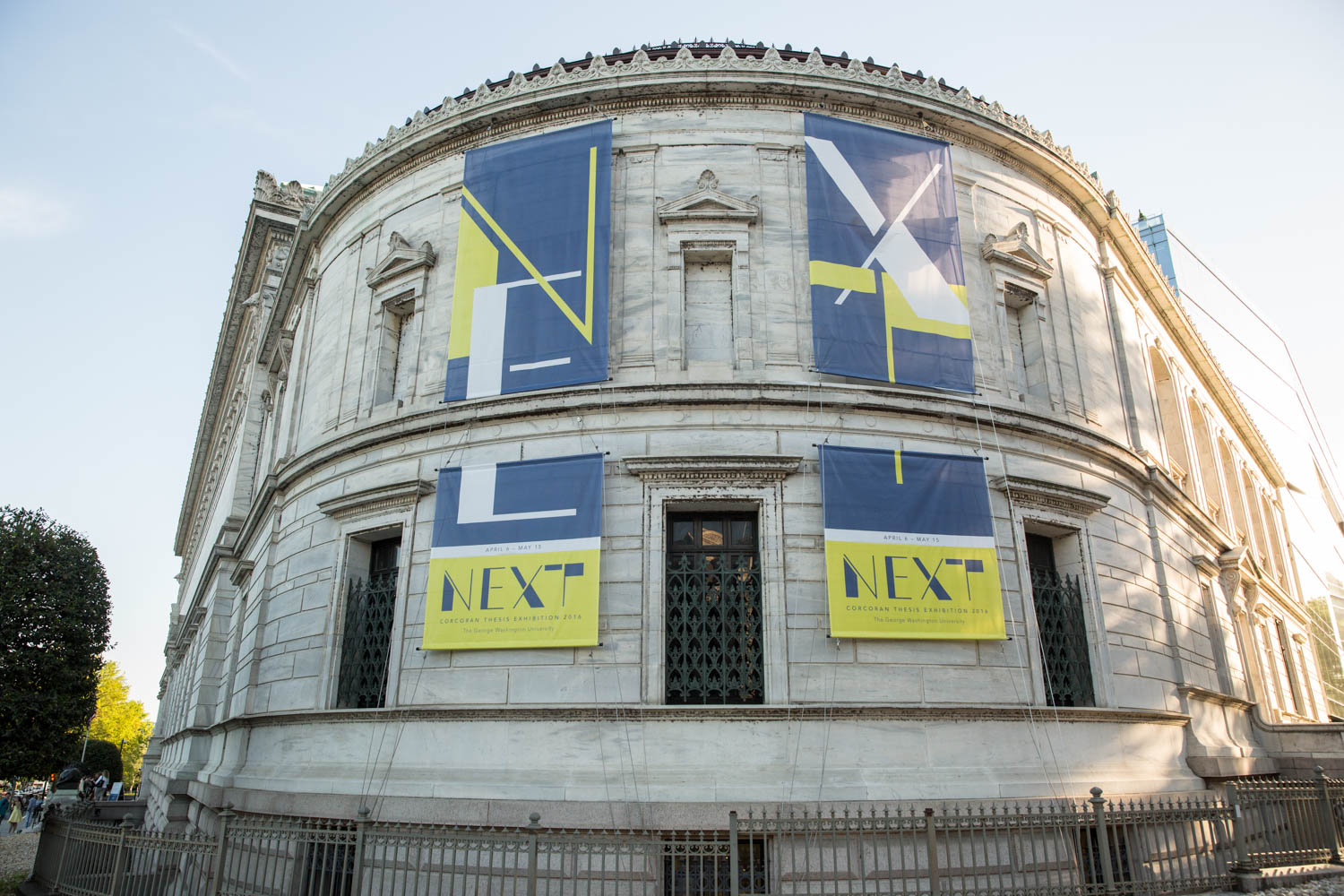As the Corcoran School of the Arts and Design celebrates its biggest event of the year with the NEXT exhibit, the university is poised to expand the school’s academic programming and improve its infrastructure, classroom and exhibition space.
The university will take advantage of the summer break to launch a new phase of renovations on the Flagg Building, the historic Beaux-Arts home of the Corcoran School of the Arts and Design on 17th Street.
The building will be closed starting May 16 and reopen in time for the fall 2016 semester.
During what will be a multiyear phase of renovations expected to extend through 2018, GW will upgrade the building’s infrastructure, create academic program space on the building’s second floor, restore its historic “Night Doors” facing 17th Street and complete exterior work to ensure all areas of the building façade and roof are of the highest standard in time for the National Gallery of Art’s incoming exhibitions.
Once this work is completed, the second-floor galleries will be turned over to the National Gallery of Art (NGA) for future exhibitions. In coming years, the NGA will organize and present exhibitions of modern and contemporary art.
“Essentially every aspect of the Flagg Building’s infrastructure has to be updated,” said Sanjit Sethi, director of the Corcoran School of the Arts and Design. “Once this renovation phase is complete, the majority of the school’s programs will be unified under one roof.”

Cellist Sophie Shao performs in the Corcoran School Main Atrium last semester. (Photo/William Atkins)
The physical update of the Corcoran will be mirrored by the administrative integration of all GW arts programs under the Corcoran School, which is underway and is envisioned to be completed by summer 2017. Mr. Sethi also is working with senior leadership in the Columbian College of Arts and Sciences to develop plans to expand the school’s programming through cross-disciplinary collaboration as outlined in the university's strategic plan.
“My vision for the Corcoran School is an engaged, dynamic institution that is devoted to exploration, innovation and education of the arts and design disciplines in the broadest sense,” Mr. Sethi said.
Changing the world through arts and design is a critical focus for Mr. Sethi.
New academic institutes and programs, such as a center dedicated to fostering creative leadership, will bring in dynamic artists-in-residence and foster innovative interdisciplinary practices that enable graduates to address complex and pressing issues facing the world.
Mr. Sethi also will implement programming focused on community engagement that leverage the school’s tradition of service to build partnerships that have significant impact in local communities.
Mr. Sethi has plans for fundraising to help achieve some of these goals.
“A passion for making a difference in the world has always been a distinguishing feature of GW students,” he said, “and using the arts as a platform for social justice, political engagement and civic responsibility presents opportunities to leverage this competitive advantage and our prime location in the nation’s capital.”
This fall, Mr. Sethi plans to curate an ambitious slate of socially focused exhibitions in the building’s central atrium. Galleries on the first floor of the building will stage exhibitions by Corcoran students and in the future also include shows by the university’s Luther W. Brady Art Gallery.
Ben Vinson, dean of the Columbian College, said that bringing together GW’s arts programs while envisioning the future and turning that into a renovation plan has been a complex process.
“I am grateful to the many across the university who have assisted in this effort,” Dr. Vinson said. “It is truly exciting to imagine the possibilities for the Corcoran School in the years to come and to see the work and planning of so many beginning to come to fruition.”
During the major phase of the renovations over the next two years, design-oriented classrooms will be added to the second floor with a focus on creating learning space that is flexible, soundproof and equipped with the latest in technology. These spaces will house the school’s existing design programs, including Exhibition Design and Interior Architecture and Design, as well as several new programs in cutting-edge design fields over the next several years.
This phase of renovations also will include addressing many years of deferred maintenance that will ensure that the building can support the planned academic programming and National Gallery of Art exhibit spaces. These upgrades will bring the building’s core infrastructure up to the standard of new construction.
Life safety systems including fire alarms and sprinklers, lighting, electrical systems, information technology infrastructure and mechanical equipment will be upgraded, and ADA accessibility will be improved by expanding restrooms, elevators, stairs and ramps.
In all, these early phase renovations are anticipated to cost $47.5 million, which is fully funded. The money comes from funds GW received through the original agreement to acquire the Corcoran, the sale of the Fillmore Building and programmatic funding. The university has estimated the total cost of all envisioned renovations at $80 million, and future phases will be completed as funding sources are identified.
Future phases will focus on developing more innovative classroom, student and faculty space that preserves the Flagg Building’s history and meets the needs of an innovative arts education. Among the preliminary plans is an overhaul of the building’s lower level to create a central creative area with student studios, achieving the original architect’s vision for the space.
“We can’t imagine where arts education will be in 10 years so we need spaces that allow flexibility and creative use and, at the same time, are harmonious with this historic building,” Mr. Sethi said.
He plans to solicit input from faculty, students and alumni on how best to reimagine spaces for teaching, learning and creating art. “I am excited to work with our community to realize the tremendous potential of this landmark building,” he said.
Opened in 1897, the Flagg Building received D.C. historic landmark status in 1964 and was listed in the National Register of Historic Places in 1971. The D.C. Historic Preservation Review Board designated most of the building’s interior historic last year.
Architect Leo A Daly is leading design of the renovations, and Whiting-Turning is serving as construction manager.


